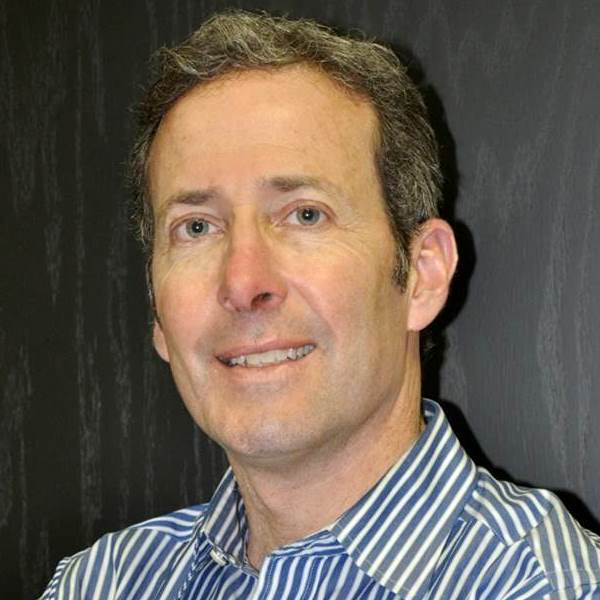Our Favorite Corner Office Insights of the Past Half Decade
“If you’ve seen one association, you’ve seen one association.” I remember hearing that line for the first time when I interviewed ASAE President John Graham in the summer of 2010. It made sense at the time, but when I looked at my notes after the interview, it didn’t seem right. So, I sheepishly called Graham’s office a few days after our conversation to confirm that I had his quip right. Turns out I did. What Graham meant was that no two associations are the same. And, I can say after five years (60 months) of interviewing luminaries from the association world, no two association leaders are the same either.
Below are some of our readers’ favorite insights for Corner Office interviews we’ve conducted since launching Association Adviser in March 2010. It’s been an honor and a privilege to sit across from so many humble and truly dedicated visionaries.
Association luminaries opine about career choices, leadership, innovation and connecting with the younger generation.
It’s hard to beat a career in which you’re wearing multiple hats, surrounded by dedicated people, collaborating constantly, championing important causes and compensated well.
Great leaders are excellent listeners who empower people to make decisions and give them the freedom to create without fear of retribution if things go awry.
On Careers in the Not-For-Profit World
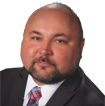
Shane Yates, CAE, CMP, executive director of the Ohio Society of Association Executives (OSAE): One of the best pieces of advice I ever received was to focus on your passion, not your paycheck. We get the opportunity to not take ourselves so seriously and sometimes we need to be reminded that it’s OK to laugh or be silly. I think in association management that maturity and playfulness can coexist. That’s the great thing about associations. If we pool our collective resources, we can take a bunch of small groups and do something better. The end goal of the campaign is to show to the public the good work that the association committee in Ohio is doing.
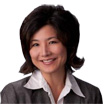
Rita Chen Fujisawa, chief operating officer of the California Association of Health Facilities (CAHF): Working at an association? I can’t think of any other place where you get to wear so many different hats—technology, finance, operations, policy objectives, human resources and content. I have a hand in everything. It’s not just internal operations, but strategy. I get deep in the weeds, but I also get to see the big picture. There’s no other type of job where you get to understand the depth of a profession—the ins and outs, the struggles they face and the challenges they must overcome to be successful. For example, nursing homes get a lot of negative press, but I get to see all the great care that’s being provided to the elderly.
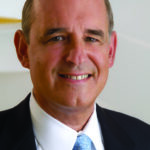
John Graham, president of ASAE The Center for Association Leadership: In addition to what you already know about good work/life balance, collaborative work environment and the opportunity to wear multiple job hats, the best secret of association work is the pay. Turns out association pay is pretty competitive. According to the Bureau of Labor Statistics, associations actually pay $7,000 a year more than a comparable job in the for-profit world.
On Innovation
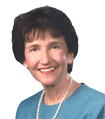
Pamela Hemann, FASAE, CAE, president of Association Management Services, Inc. and executive director of Leadership California: There’s no lack of ideas at most associations. What they need is someone who can say how they’re going to execute those ideas. It’s great to start something but keeping it going and devoting the resources to it is the challenge. And that’s worth posting above every conference room and cubicle in your office.
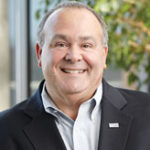
Tom Hood, CEO of the Maryland Association of CPAs (MACPA): As CEO or ED, your main job is to be chief innovation officer and chief collaboration officer. Make sure your members, your volunteers and your staff are aligned with you and engaged with you. It’s not ‘my project’ anymore. It’s ‘our project.’

Eric Fletty, vice president, operations, TAPPI (formerly the Technical Association of the Pulp & Paper Industry): We tell TAPPI members that if they have an idea and it’s fiscally responsible to implement that idea, we do it. It’s that simple. If it’s not fiscally responsible to act on their idea, we talk openly and honestly about the financials—how to raise the funding needed or change the scope of the plan. Once people know that their ideas will be treated seriously, you get more and more ideas. This has helped us do some amazing things.
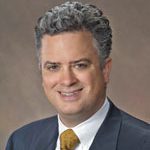
Christopher Newton, president, Texas Food & Fuel Association: There’s no formal process per se. We look carefully at what other [organizations] are doing well. We try to have as much direct interaction with members as possible so we can get good feedback. We prefer to wade into the pool slowly, taking measured steps, before going into the deep end. Also, you can be innovative and still be low-tech. For instance, when it comes to member communication, we’re finding that good old fashioned snail mail and faxing has been effective for cutting through the clutter.

MHEDA
Liz Richards, executive vice president of the Material Handling Equipment Distributors Association (MHEDA): We are always open to new ideas and the staff at MHEDA lives and breathes this every day. We have a very engaged and working board of directors who know right from the start what we expect from them and vice versa. The board provides the insight and direction through lots of interaction with us. We handle the administrative details to make a program happen. Again, the strategic planning process we have in place really drives this.

Martyn Hopper, executive vice president and CEO, Pest Control Operators of California (PCOC): You have to think in terms of long-term development and vision five to 15 years out. You constantly have to refresh your vision. Keep looking at your business the way a competitor would. Where are your weaknesses? Is the website up to date and doing all the marketing it needs to do for you? Are your member benefits offering real tangible value?
Fujisawa: Remember, technology is not necessarily innovation, and vice versa. Innovation could be a new process or approach to solving a problem that we want to reward, not necessarily technology. Also, developing an app isn’t innovative per se, unless it’s in an industry that’s not very tech savvy.
How Would You Describe Your Leadership Style?
Fujisawa: I try to lead by example. I don’t like being the instructor, telling people to do it this way or that way. I’m not a black-and-white person. I want people to figure things out for themselves. I’m the No. 2 person to our CEO. My job is to make every one of our 35 employees look good. My job is to make them successful. I’m here to coach, guide and mentor them.

Frank Rudd, president and CEO of the Florida Society of Association Executives (FSAE): I’m confidently hands off. You have to be able to take a step back from the day-to-day noise of meetings, emails and phone calls and think more about your vision and the big picture. Again, I’m new at my current job. But, once you understand the culture and the game plan, you should step out of the way and just let your team members do their jobs. We’re shooting for 1,000 members. The more members you have, the more programs you can offer and the more resources you have to do those programs.
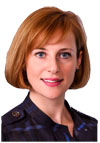
Stephanie Drake, MBA, CHHR, chief talent officer and associate executive director of human resources, American Osteopathic Association: I’m tenacious—always looking for new ideas and changing things up. How can we look at a challenge or opportunity differently? How do we change the conversation? Also, I manage talent, not the job description. There’s a big difference.
Fletty: Technically, it’s servant leadership, but I try to keep things pretty simple. My belief is that if you create a culture based on trust—promote the importance of integrity, empower your team make good decisions, but give them the opportunity to learn from their mistakes—you will create an exceptional team.

Susan Neely, CAE, president and CEO of the American Beverage Association and newly elected chair of the ASAE Board of Directors: I like to hire great people who have a passion for their jobs and at least a bit of entrepreneurial spirit. Then I turn them loose with a big objective and as much responsibility as they can handle. For me, effective leadership is about building and supporting a great team that personifies the idea of being “better together.”
Newton: I’m blessed to have a loyal and long-tenured staff of six. My style is to set good goals and then stay out of the way so my team can do its job. This allows me to focus on the big picture. You can’t micromanage. You need to make sure there is clear and direct communication with each team member about the organization’s goals and objectives. We want everyone to feel like they’re part of the process and that they have a say in our strategic plan.
Hopper: I agree. [California Gov.] Arnold Schwarzenegger was a tremendous influence on my own leadership style. He’s a great listener. He empowers people to make decisions, and he gives them the freedom to create without fear of retribution if things don’t work out exactly as you planned. He is a great recruiter of talent. He taught me that you have to choose the right people for your team and then let them go. Don’t micromanage them. To paraphrase Winston Churchill, “All men make mistakes, but wise men learn from their mistakes.” In other words, the more mistakes you make, the more you learn and the more you grow.
Connecting With Younger Members
Rudd: Yes. We’ve got a great infusion of young leaders involved. They have lots of enthusiasm and new ideas—it’s not just about mobile and social media. They’re essential for helping us get out of the “that’s how it’s always been done” rut. We’ve got everyone from CEOs to meeting planners. I want our volunteer leaders to help us set the future course of the combined organization.
Neely: Younger members of the industry are no different than younger congressional staff or other key external stakeholders. They want the information they need to do their jobs right at their fingertips. We have to be speedy and accurate at the same time. It’s not easy, but we’ve built up our muscles and do a very good job of maintaining the information flow.
Newton: The hardest part is getting young people to take the first step and engage with us. Before asking them to join, we try to get them involved in a committee or an advocacy issue. This way they can get a feel for what it’s like here. We’re putting more video of our annual expo on the website and do more with our mobile app. Unlike the boomers, younger people don’t join just because “it’s the right thing to do.” They don’t feel the same need to reach out and talk to someone at the association when they have a question or a tough challenge to solve. Younger people are more likely to turn to Google or their own online communities for answers. That’s what associations are competing with.
Drake: Younger professionals aren’t association joiners by nature. You have to educate them about what you do and why it’s important for their careers. We have a mentoring program that’s been very successful. Younger members get paired with a senior executive in health care. It’s not just occasional advice; it’s having regular monthly meetings with assignments and deliverables. When I was at American Hospital Association, we had a big presence on LinkedIn. We have more than 12,000 connections, and we do a lot of outreach to non-members through this channel. As I mentioned earlier, we’re offering six times as many webinars as we used to since younger members prefer online learning to face-to-face training.
Conclusion
Graham: The confluence of three critical factors—demographics, technology and communication—is having a profound impact on all associations. In terms of demographics, the Boomer generation is retiring and we’re drawing from a much smaller pool of potential members to replace them. In terms of technology, associations have a great opportunity now to leverage mass customization. In terms of communication, we’re still communicating face-to-face, but also virtually and online. It’s not a matter of either/or. It’s all of the above.
What do you like about working in the association community? What are some insights you would share in a Corner Office Interview? Join our conversation in the comments below:

